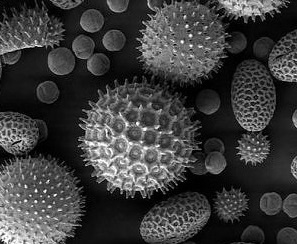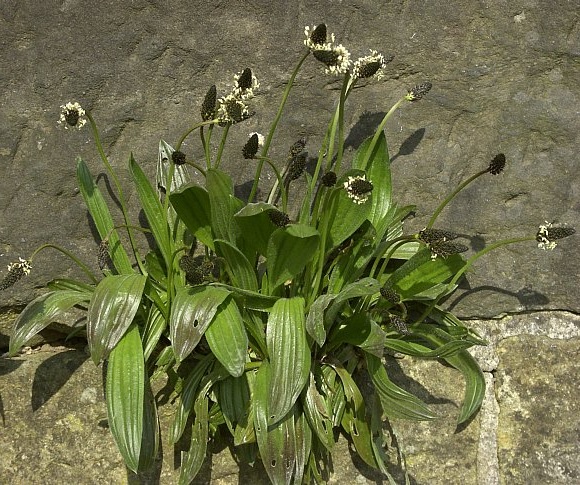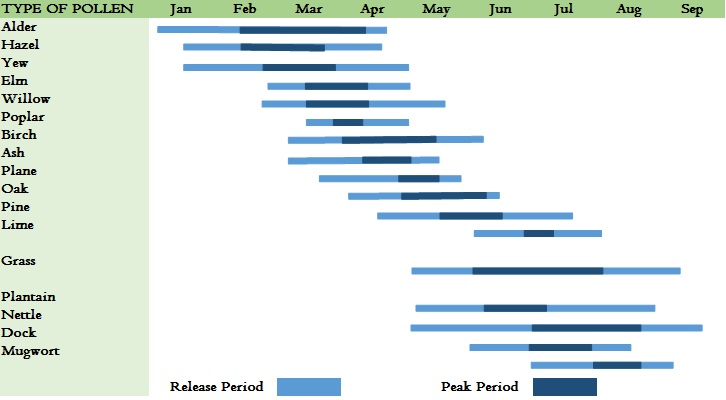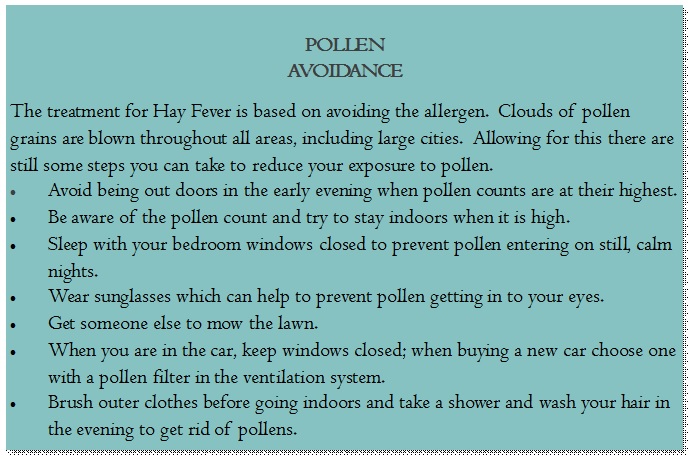What is pollen?
It is a fine powder made up of microspores produced by male plants. It carries the male reproductive cells of seed plants. Seed plants include both conifers (plants whose seeds grow inside cones) and flowering plants. Some species self-pollinate when the pollen moves from the male part of the plant (the stamen) to the female part of the plant (the pistil). Cross-pollination occurs when pollen travels to the pistils of other plants, either in the wind or with birds and insects that it sticks to when they land on plants to drink their nectar. The birds and insects travel from plant to plant, leaving pollen on them and pollinating them. This is how plants are fertilized and can reproduce.
Pollen, especially the lightweight kind found on wind pollinated plants, such as grass, that is easily dispersed by the wind, is an allergen that causes a specific type of allergy called hay fever.

POLLEN GRAINS
Where does it come from?
Hay Fever sufferers are allergic to pollens present in the air. These come from wind – pollinated plants, by far the commonest are grasses, weeds and trees.
Grasses
Although there are many species of grass only a relatively small number are common and prolific producers of pollen enough to give high levels in the atmosphere. Rye grass, planted for grazing, produces less than traditional meadow grasses such as Timothy grass, sweet vernal grass, cocksfoot and Yorkshire fog. With increasing set aside of agricultural land, the meadow grasses will again become especially relevant causing likely rising counts.

TIMOTHY GRASS
Cross reactivity between different species of grass is high, so if you are allergic to one type it is highly likely you will react others. The grass flowering season generally runs from mid May to the end of July with a peak late June to early July. Levels vary from day to day and also within day depending on environmental factors.

SIVER BIRCH
Trees
The major tree pollens are hazel, plane, oak, ash and birch. These are produced in spring soon after the leaves develop. The major ones are present for about 4 to 6 weeks late March to early May.

PLANTAIN
Weeds
The weed pollen season is in the late summer in to early autumn and is the least significant of the groups in the UK. In the southern parts of Europe, wall pellitory is a major problem and is now getting established here

POLLEN CALENDAR FOR THE UK
 Full details can be seen in our Allergy Self Help Guide
Full details can be seen in our Allergy Self Help Guide
https://anti-allergybedding.com/wp-content/uploads/2017/07/CAT.pdf
For more information on pollens and symptoms visit: